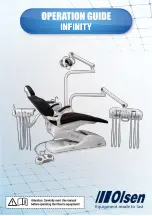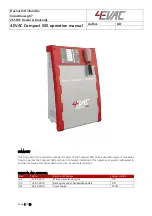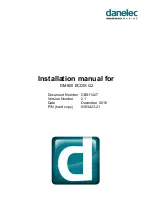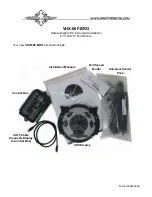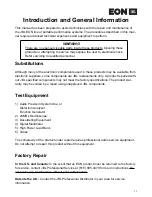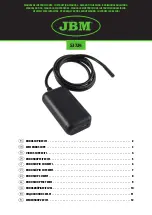
RTC
®
5 PC Interface Board
Rev. 1.9 e
8 Advanced Functions for Scan Head and Laser Control
163
innovators for industry
• With
at_once
= 1 or 3, all settings collected until
then (via control commands or list commands)
will be processed immediately and simulta-
neously. Then – even before the subsequent
command is executed – the scan system’s axes
will be moved from the current position to the
corrected position at the (pre)defined jump speed
(to avoid hard jumps). Consequently, this can
require some clock cycles. Any scanner delays will
not be initialized. The INTERNAL-BUSY status is set
while the jump to the corrected position is
executed.
• With
at_once
= 0, a setting made via a control
command (but not via a list command) automat-
ically takes effect (together with all transfor-
mation settings that were collected and
intermediately stored until then) upon execution
of the next list command (essentially immediately
if a list is currently processed; in this case,
at_once
= 0 is handled like
at_once
= 1).
Otherwise, all settings defined with
at_once
= 0
(together with hitherto collected settings) will
remain without effect – even when a
or
command is subsequently executed –
as long as they aren’t activated via a subsequent
coordinate transformation (e.g. via a list
command with
at_once
= 1 or 3 or a corre-
sponding control command).
• With
at_once
= 2, the settings (collected via
control or list commands) only become effective
upon execution of the next
,
jump commands such as
or
). Correction of the current output
position will then occur together with the
specified coordinate jump instead of separately
(unlike
at_once
= 0, 1or 3). This eliminates
unnecessary galvanometer scanner motions (incl.
possible delays) and shortens runtime.
Example: The following command list produces a
first jump to (0, 0), followed by – if
at_once
= 1
or
at_once
= 3 – a second jump from (0, 0) to
(1000, 500) and a third from (1000, 500) to
(0, 500). But if
at_once
= 2, then only a second
jump occurs from (0, 0) to (0, 500).
jump_abs(0, 0);
set_offset_list(1000, 500, at_once);
jump_abs(-1000, 0);
• If no correction table has been previously
assigned to the corresponding scan head
connector, then the new settings for the
coordinate transformations are only stored on
the RTC
®
5 (even when
at_once
= 1 or 3) and will
only take effect when a correction table is
assigned.
• If the “second scan head control” option has not
been enabled, coordinate transformations
specified for the secondary scan head control will
have no effect.
• Coordinate transformations are applied to the
output coordinates of all vector commands (jump
or mark list commands, but also
commands) and arc commands. The
transformation only becomes effective
after
microvectorization and
after
incorporation of any
wobbel or Processing-on-the-fly settings, but
before
image field correction. The matrix trans-
formation will thereby be executed
before
the
offset translation.
• The coordinate transformation enables, for
example, scalable marking. When scaling, take
into account that the resulting effective jump or
marking speed will change (even direction-
dependently if the scaling factors
and
differ). Under some circumstances, the jump and
marking speeds must therefore be suitably
adjusted.
• For 3D vector commands, the transformation
generally only affects the X and Y components.
Only the offset affects all three components.
• For utilizing the complete real image field even if
a coordinate transformation (as rotation,
shrinkage or shift) is activated, the extended
value range of the virtual 24-bit image field can
be used (see
• For 2D Processing-on-the-fly applications, you
can additionally define coordinate transforma-
tions for the entire virtual image field. The RTC
®
5
applies such coordinate transformations to the
already microvectorized coordinates, but – unlike
the previously described head-specific transfor-
mations – already
before
Processing-on-the-fly
mations in the Virtual Image Field" on page 185
.
k
X
k
Y



































